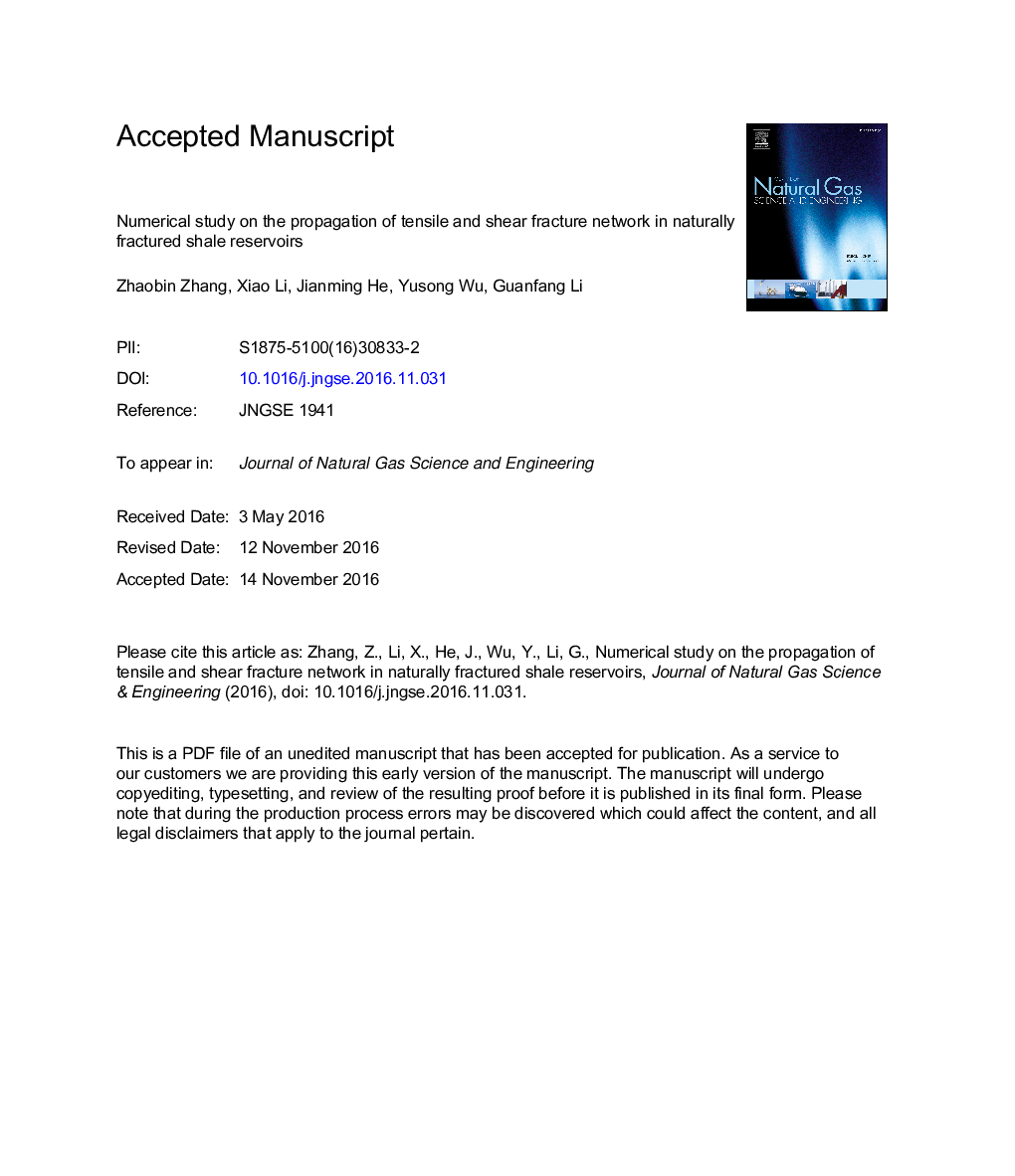| کد مقاله | کد نشریه | سال انتشار | مقاله انگلیسی | نسخه تمام متن |
|---|---|---|---|---|
| 5485208 | 1523006 | 2017 | 24 صفحه PDF | دانلود رایگان |
عنوان انگلیسی مقاله ISI
Numerical study on the propagation of tensile and shear fracture network in naturally fractured shale reservoirs
ترجمه فارسی عنوان
مطالعه عددی در مورد انتشار شبکه های کششی و برش شکستگی در مخازن شکسته طبیعی شیل
دانلود مقاله + سفارش ترجمه
دانلود مقاله ISI انگلیسی
رایگان برای ایرانیان
کلمات کلیدی
تحریک شکست هیدرولیکی، گاز شیل، مدل سازی عددی، روش انحلال انقطاع،
موضوعات مرتبط
مهندسی و علوم پایه
علوم زمین و سیارات
علوم زمین و سیاره ای (عمومی)
چکیده انگلیسی
The propagations of tensile and shear fracture are important to the permeability enhancement of the naturally fractured shale gas reservoirs during hydraulic fracturing treatment. In this work, the hydraulic fracturing process is numerically investigated by a newly proposed model based on displacement discontinuity method. Natural fracture network is reconstructed from the shale samples from the Longmaxi formation of China. The small fractures that are difficult to be identified from shale samples are simulated by randomly adding virtual fractures. The model is extensively validated against commercial software and the numerical modelling of previous works. Numerical results show that the shearing of natural fractures may occur before they are reopened by fluid pressure. Moreover, the shear length of natural fractures is much longer than that of the hydraulic fractures. The effects of crustal stress are then investigated. The effects of stress angle, which is the angle between maximum principle stress direction and main natural fracture direction, depend on stress difference. When stress difference is small, the optimal stress angle is 90°, here the optimal stress angle is defined as the stress angle when the most complex fracture network could be formed through hydraulic fracturing treatment. By contrast, when stress difference is big, the optimal stress angle is in range from 45° to 60°. The effects of stress difference also depends on stress angle. When the stress angle equals to 0°, the fracture lengths decrease with stress difference. When the angle equals to 45°, the fracture lengths increases with stress difference. When the stress angle equals to 90°, the fracture lengths first increase and then decrease with stress difference.
ناشر
Database: Elsevier - ScienceDirect (ساینس دایرکت)
Journal: Journal of Natural Gas Science and Engineering - Volume 37, January 2017, Pages 1-14
Journal: Journal of Natural Gas Science and Engineering - Volume 37, January 2017, Pages 1-14
نویسندگان
Zhaobin Zhang, Xiao Li, Jianming He, Yusong Wu, Guanfang Li,
